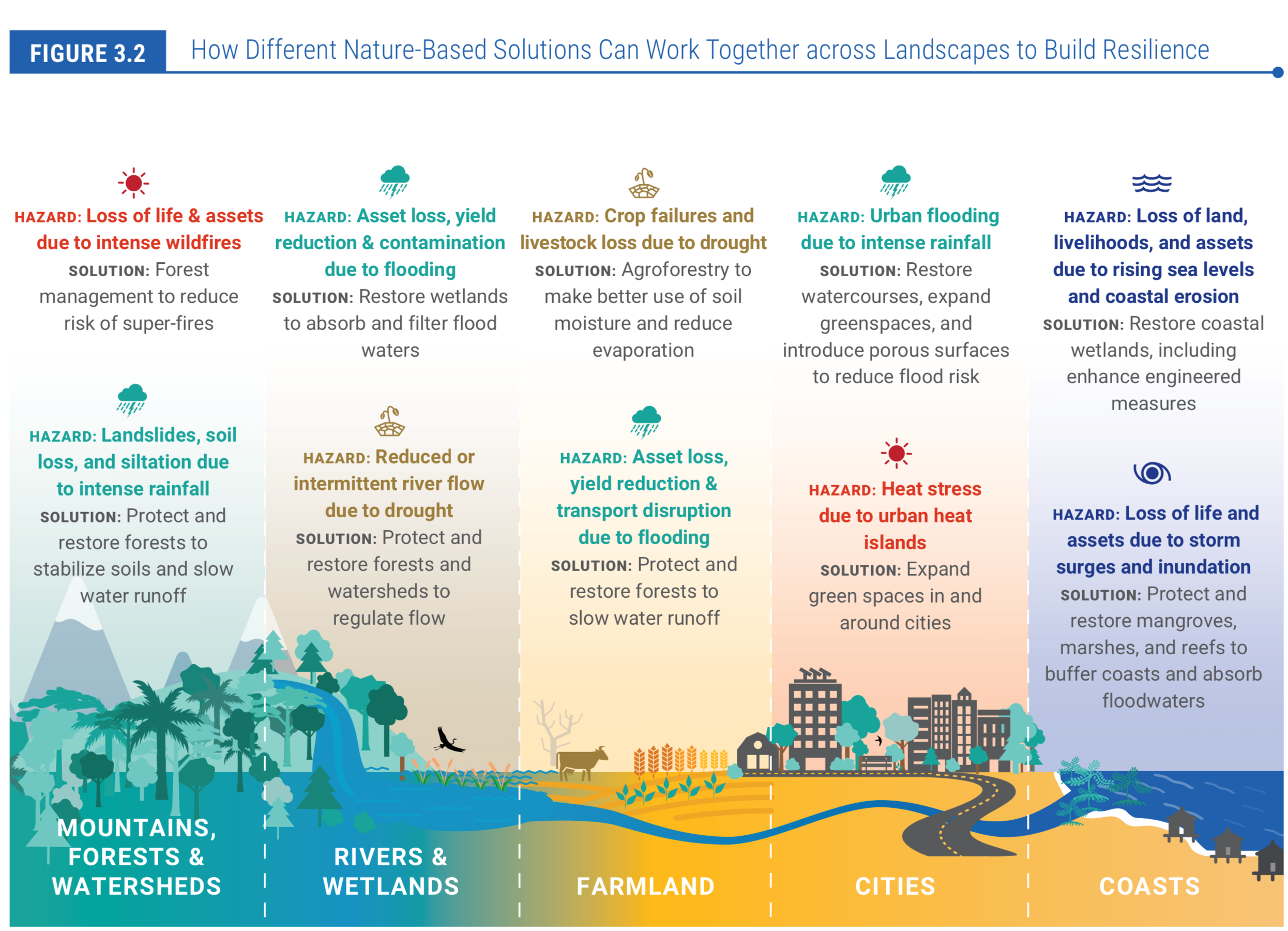The challenge
The science is clear, the climate crisis is here and the evidence is mounting. “Wildfires, higher temperatures, rising seas, floods, fiercer storms, droughts, city taps running dry….” This gloomy but realistic picture is painted by the Global Commission on Adaptation (GCA) www.gca.org in their recent report on climate change action. The chart above shows how damage from global heating gets worse as temperatures rise. But there are solutions and we can act to slow down the worst impacts of climate breakdown. The key question is, with limited time, what are the most effective actions to take?
The response
There is a debate about which of two distinct paths we should choose. The first, “mitigation”, comprises measures designed to reduce and avoid the GHG emissions that are fuelling the climate crisis and further global heating. They require large scale transitions to low carbon systems — in sectors such as energy, transportation and agriculture/food — require international action, and deliver results over a longer time period given the lag time of our climate system. The more we reduce emissions now, the easier it will be to adapt to changes we can no longer avoid.
The second path is “adaptation”, measures designed to alter our behaviour and systems to protect people, infrastructure and the environment now. The changes are more local e.g., health care and water systems afflicted by high temperatures, or city and coastal infrastructure where people in low lying areas are vulnerable to rising sea levels and flooding.
Critics believe that a focus on adaptation could be used as an excuse by some policy makers not to pursue the radical shift to a low carbon world needed to slow down global heating. But mitigation alone could take years to slow global heating while investing in adaptation will help the millions struggling right now with the multiple impacts of the climate crisis.
The Global Commission on Adaptation makes the compelling case that investing $1 trillion in five key areas this year will deliver up to $7 trillion in benefits to people, the environment and economies over time.
The report comes from an expert group, led by former UN Secretary-General Ban Ki-moon, Bill Gates, and the head of the World Bank, and environment ministers of 20 countries including China, India and Canada. The GCA recommends focusing on five sectors to make the biggest difference including: strengthening early warning systems; more resilient infrastructure; mangrove coastal erosion protection; dry land crop agriculture; and, more resilient water management.
The results can be dramatic. In 1970, Cyclone Bhola led to 300,000 deaths in Bangladesh. In the last 20 years, the country strengthened disaster preparedness including early warning systems, cyclone shelters and stronger buildings. A cyclone in 2007 led to 3,363 deaths and a similar storm in 2019 caused five deaths. The report says that if developing countries invest $800 million in these systems, they could save thousands of lives and between $3-16 billion a year.
Investing in nature-based solutions (see chart above) can deliver huge benefits such as coastal protection, storm water drainage and cooling for cities. Mangrove forests provide $80 billion in avoided losses by protecting coastlines and 18 million people, and restoration has a 10:1 benefit-cost ratio. The report says that with proper investment all nature-based solutions could provide 33% of the mitigation required to contain global heating to 2C.
As this last example shows, we need to pursue both paths, mitigation and adaptation, to meet the multiple threats of global heating. The report calls for a revolution in planning and decision-making by both public and private sectors. “Adaptation is not an alternative to a redoubled effort to stop climate change, but an essential complement to it.”


